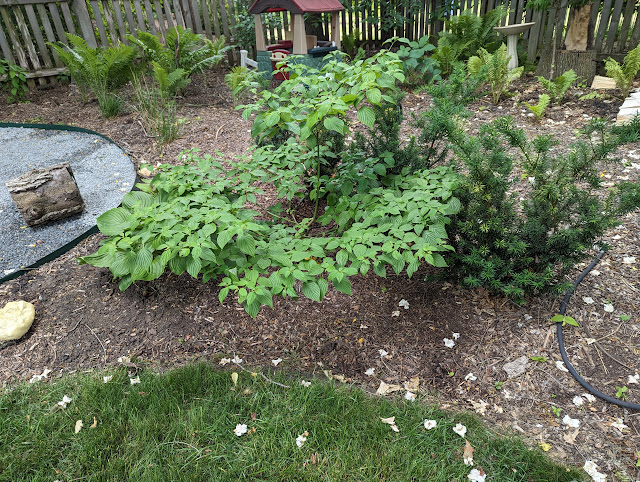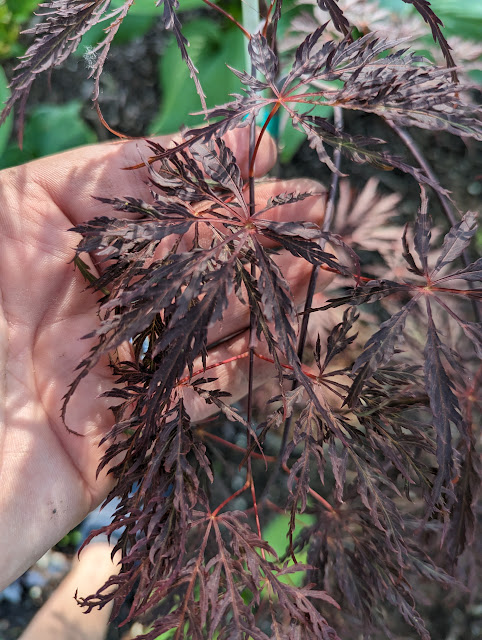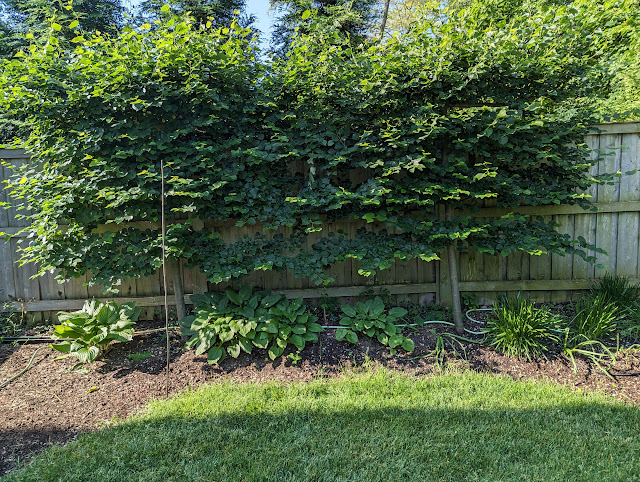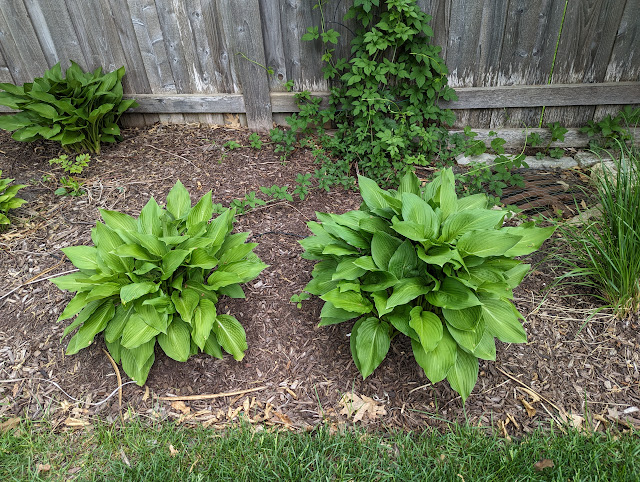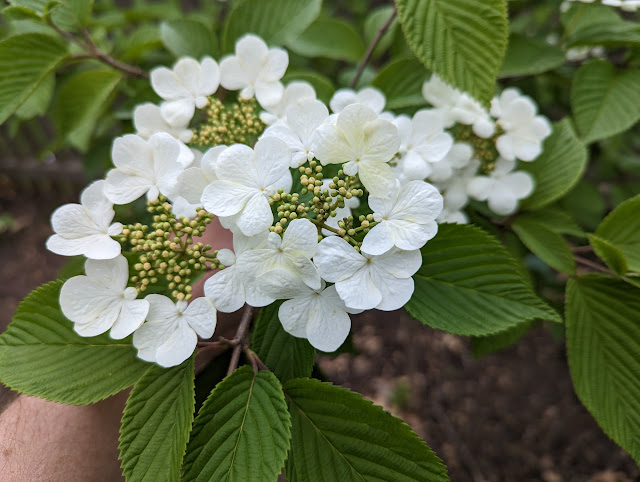Bressingham Blue Hostas - Two Years Since Bareroot - July 2023

In Spring of 2021, I planted eight bareroot Bressingham Blue Hostas from Longfield Gardens along the edge of a new curve in one of our backyard beds . The plan called for these to be 'Hadpsen Hostas', but I found and admired the Bressingham Blue variety, so I made the swap. One year post-planting, seven-of-the-eight came back and were putting on their trademark blueish-green foliage. This is what the Bressingham Blue hostas looked like in late May 2022 . Started with eight. By May 2022, there were seven. Not bad. How about today? See below for a photo showing these hostas. The two in the 'back row' are still there. But, at first glance, it seems that there are (now) just four in the front row. But, if you look closer, there are (strangely) two very TINY tucked in there. The first tiny one is in the open gap - what becomes the 'second' from the left. Below is annotated (and zoomed) version of the same photo: And the other tiny one is all the way to

